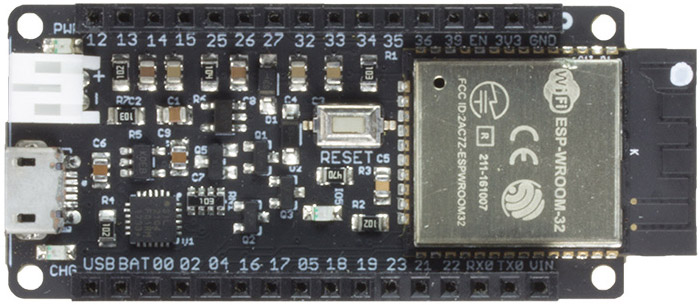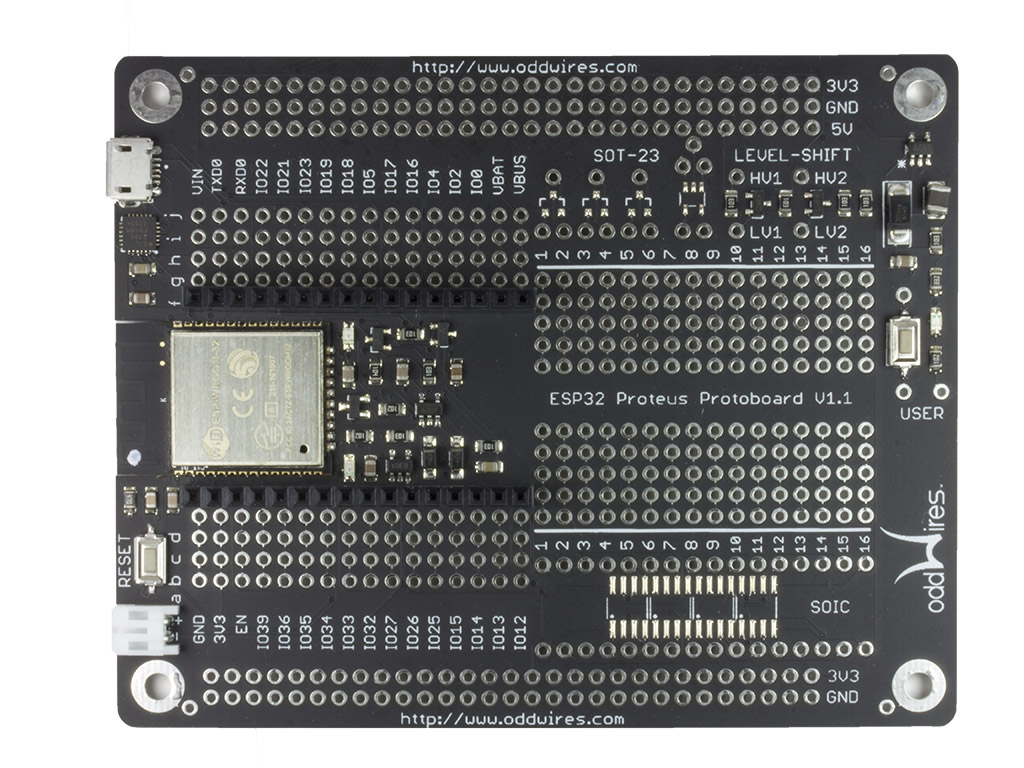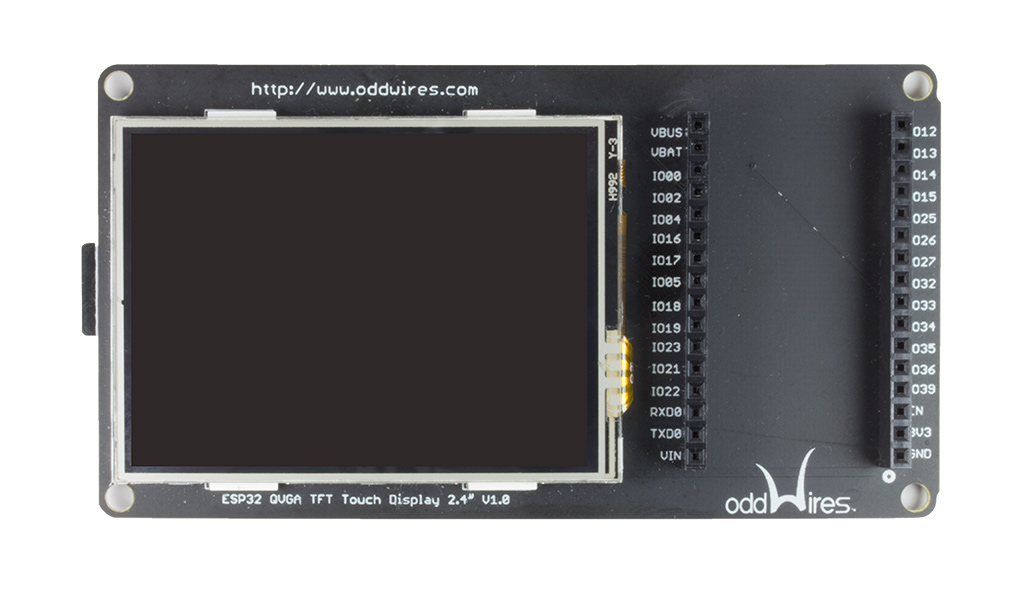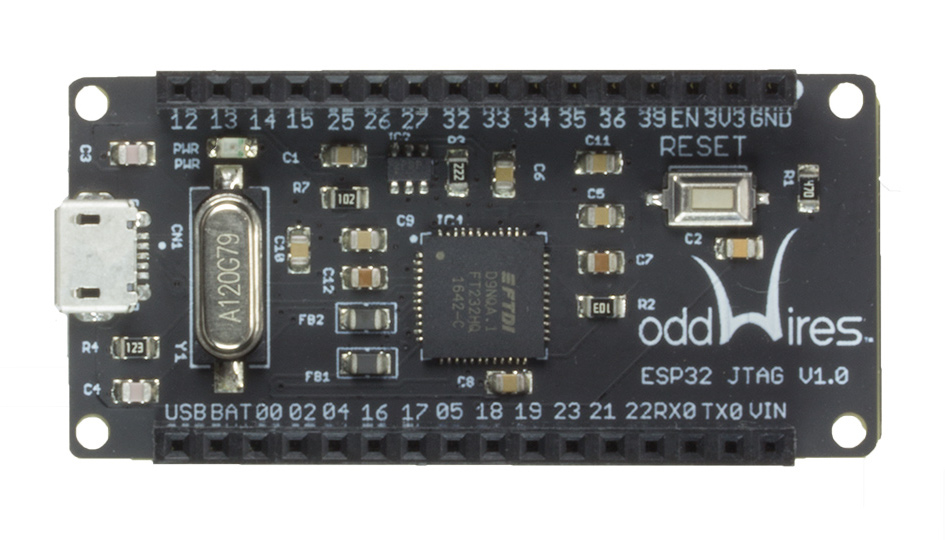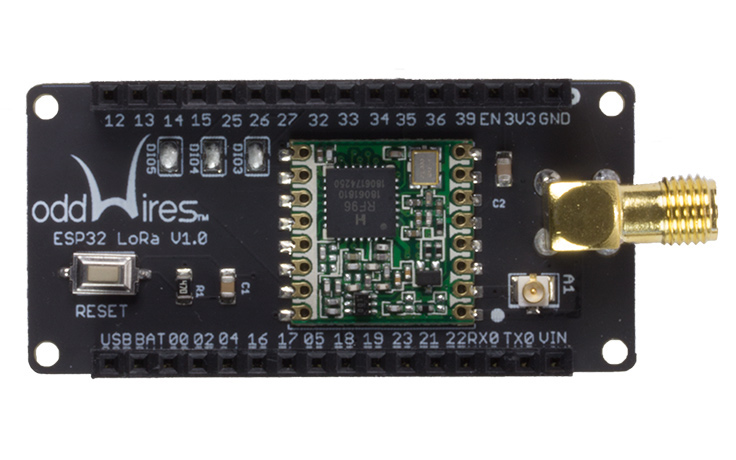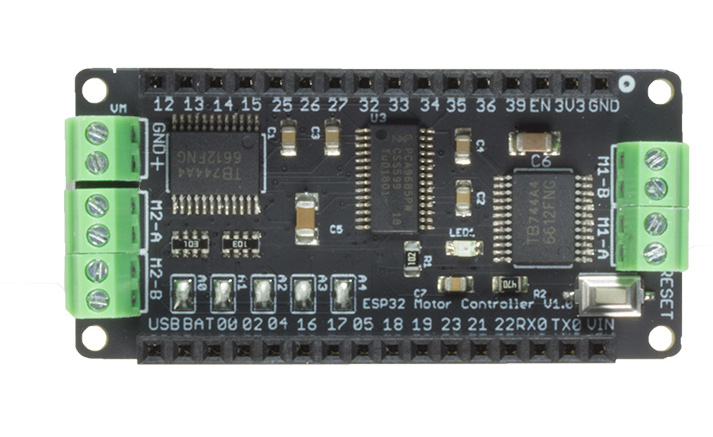IoT-Bus
Why you should use IoT-Bus for your next IoT Project
The oddWires IoT-Bus system is based on a low-cost, open design around the Espressif ESP32 processor that is designed to be "plug and play" and support multiple platforms and frameworks. Works with Mozilla IoT, Alexa and Google Home. Use JTAG debugging straight out of the box with no configuration using PlatformIO! Although IoT-Bus is very new, oddWires was established in 2012 and has over 15,000 customers in commerce, education and and the home!
Open
The oddWires IoT-Bus system is highly cost-effective, open design based on the 240 Mhz Dual-Core Espressif ESP32 with WiFi and Bluetooth. Use IoT-Bus with Mozilla-IoT for a completely open approach to IoT.
Plug and Play
The initial release includes eight boards in an extensible format. Processor modules, controller modules, communications modules as well a QVGA 320x240 Touch-sensitive TFT Display and prototyping board are all included.
Secure
Secure boot, flash encryption, hardware acceleration for AES, Hash (SHA-2), RSA and ECC are all part of the firmware. Run an OpenSSL server on IoT-Bus.
Powerful Connectivity
IoT-Bus processor modules include WiFi and Bluetooth as standard with LoRa and CAN Bus available.
The smallest form factor processor module. The IoT-Bus IO is based on the Espressif 240 MHz Dual-Core ESP32 processor.
The heart of the IoT-Bus system
IoT-Bus Io
The heart of the IoT-Bus system. Very small and breadboard-friendly.
Comes with with the option of male, female or both (stackable headers). Includes a dual-core 240 MHz ESP32 with WiFi and Bluetooth. You can use the WiFi both in station (device) mode and access point mode. It includes traditional Bluetooth as well as BLE 4.0.
On-board is a 3.3V regulator and a battery charging device that enables you to switch between using USB or battery power. The battery is automatically charged in the USB is plugged in. A status light shows if it is charging or fully charged. All ESP32 pins bar the flash pins are exposed and available for your use.
Perfect for testing, early deployment, college IoT projects. The IoT-Bus Proteus is based on the Espressif 240 MHz Dual-Core ESP32 processor.
Get an IoT prototype out fast
IoT-Bus Proteus
This board is larger and designed to make it possible to add your own circuitry to make a complete IoT solution on one board.
The board includes a large prototyping area that includes room for traditional DIP and through-hole components as well as SMD parts such as SOIC and SOT-23. A user LED and switch is included but not connected to any pins so you can use them how you wish. Two level shifters are included so you can interface with 5V devices. The Proteus includes both 3.3V and 5V rails. Both these rails are available whether powered by the USB or the battery as the 5V is derived from the lower voltage.
Excellent touch-sensitive 2.4" TFT display with an IoT-Bus socket gives you a plug and play display.
Display
IoT-Bus Display
2.4” 320x240 QVGA TFT Touch Display offering plug and play display output and touch sensing together with a 4-bit SDMMC SD Card.
We picked 2.4” over 2.8” as it has a crisper display at 320 x 240 resolution and its slightly smaller size helps in IoT applications. It has an IoT-Bus socket at the side for easy access.
Stack the JTAG debugger, open up PlatformIO and debug. It's as simple as that!
JTAG debugging without the hassle
IoT-Bus JTAG
This IoT-Bus module provides JTAG debugging for the Io and Proteus boards.
Both the Io and Proteus processor boards can accept a specially designed JTAG board offering hardware debugging. Our JTAG board is based on the FT232H and it enables comprehensive JTAG debugging support. You can use OpenOCD and GDB in combination to use it but our recommendation is to use PlatformIO. PlatformIO has taken away all the hard work of configuring OpenOCD and GDB. Just plug it in and start debugging!
CAN Bus speeds to 1 Mbps. Regular and extended packets supported.
CAN Bus with ease
IoT-Bus CAN Bus
The IoT-Bus CAN Bus module offers up to 1 Mbps transmission rate. Both regular and extended packets are supported.
The CAN protocol is a multi-master, multi-cast communication protocol with error detection/signalling and inbuilt message prioritization. The CAN protocol is commonly used as a communication bus in automotive applications.
Multi-master: Any node in a CAN bus is allowed initiate the transfer of data.
Multi-cast: When a node transmits a message, all nodes are able to receive the message (broadcast).
LoRa's long range and low power requirements makes it perfect for many IoT applications.
LoRa
IoT-Bus LoRa
This IoT-Bus module utilizes the Hope RFM95 to offer low-cost, LoRa radio transmission and a Wi-Fi / LoRa gateway. Excellent for low data-rate applications.
The RFM95W transceivers feature the LoRa long range modem that provides ultra-long range spread spectrum communication and high interference immunity whilst minimizing current consumption.
Using Hope RF’s patented LoRa modulation technique RFM95W can achieve a sensitivity of over -148dBm using a low cost crystal and bill of materials. The high sensitivity combined with the integrated +20 dBm power amplifier yields industry-leading link budget making it optimal for any application requiring range or robustness.
LoRa also provides significant advantages in both blocking and selectivity over conventional modulation techniques, solving the traditional design compromise between range, interference immunity and energy consumption.
Remote motor control made easy by IoT-Bus Motor.
Powerful control in a small package
IoT-Bus Motor
Control up to 4 DC motors or two bi-polar stepper motors in a very small form-factor.
We've chosen to use I2C for the IoT-Bus Motor controller as it requires less pins than using the ESP32 PWM capabilities.
IoT-Bus Relay makes it easy to control devices through Mozilla IoT, Alexa and Google Home.
Relay Controller
IoT-Bus Relay
This is an opto-isolated relay board driven by a single digital pin. It is a 110V, 10A maximum AC relay board in the IoT-Bus form factor.
Plug and play relay board with both normally open and normally closed connections.
Have oddWires design an IoT-Bus IoT solution for you.
Your unique IoT Solution
IoT Design and Build
Have an IoT-Bus solution configured for you
IoT-Bus makes it simple to stack the boards and develop an IoT solution. When it comes to deployment ask us about our services to incorporate one or more of these building blocks with your own components to create an IoT solution designed specifically for your company.
Mozilla is delighted to be working with oddWires to offer IoT Kits to enable anyone to get started with the Mozilla WebThings Gateway and Framework simply, quickly and cost-effectively.
WORKING TOGETHER
IoT-Bus and Mozilla
Put the power and control into the hands of the people who use IoT devices. oddWires and Mozilla are both committed to supporting open standards and frameworks.
Internet of Things (IoT) devices have become more popular over the last few years, but there is no single standard for how these devices should talk to each other. Most vendors are trying to own an ecosystem.
If the future of connected IoT devices continues to involve proprietary solutions, then costs will stay high, while the market remains fragmented and slow to grow. Consumers should not be locked into a specific product, brand, or platform. This will only lead to paying premium prices for something as simple as a “smart light bulb”.
We believe in Mozilla-IoT's approach to open IoT and we are partnering with Mozilla to offer IoT Kits to quickly get creating your IoT solution.
WATCH VIDEO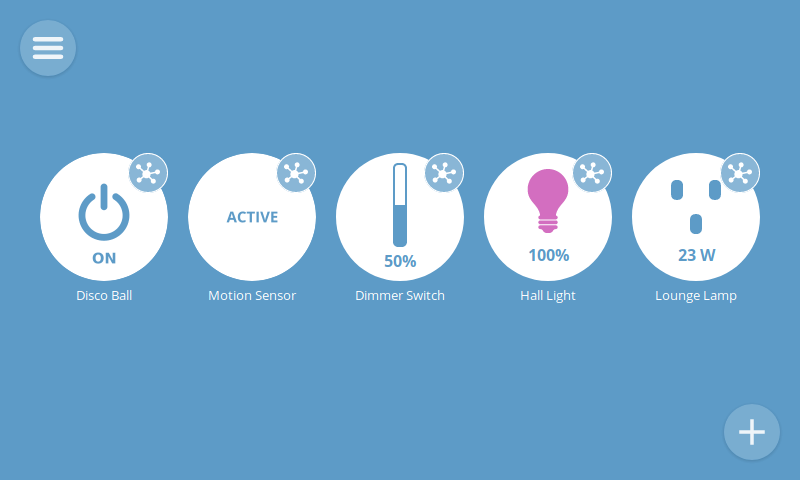
Zerynth is delighted to be working with oddWires and IoT-Bus to accelerate IoT projects from idea to implementation.
WORKING TOGETHER
IoT-Bus and Zerynth
Enabling rapid IoT development from idea to deployment and integration.
oddWires IoT-Bus is now a supported platform for Zerynth embedded Python/C enabling rapid IoT development from idea to deployment and integration with Amazon AWS, Microsoft Azure, Google Cloud Platform, IBM Cloud and others. The first step is Zerynth support for two of the oddWires IoT-Bus ESP32-based boards – Io and Proteus. You can learn more about the Zerynth support of the IoT-Bus Proteus and Io boards in the Zerynth documentation.

YOUR CHOICE
IoT-Bus Starter Kits
IoT-Bus Thing Kit for Mozilla's Things Gateway
Mozilla-IoT Smart Home Starter
Low-cost way to get started with Mozilla IoT if you already have a Raspberry Pi
- IoT-Bus Io
- Multiple sensors and relay
- 10 Examples
- Tutorials
- Everything you need
IoT-Bus Pro Kit
IoT-Bus Pro Kit
Great starter kit for IoT-Bus with lots of sensors and examples
- IoT-Bus Io
- Wide range of sensors and components
- 20 Examples
- Tutorials
- Everything you need
IoT-Bus Thing Kit with Mozilla's Things Gateway
Complete Mozilla-IoT Starter with Gateway
Everything you need to get started with Mozilla IoT
- IoT-Bus Io
- Multiple sensors, relay and Raspberry Pi
- Many Examples
- Tutorials
- Everything you need

